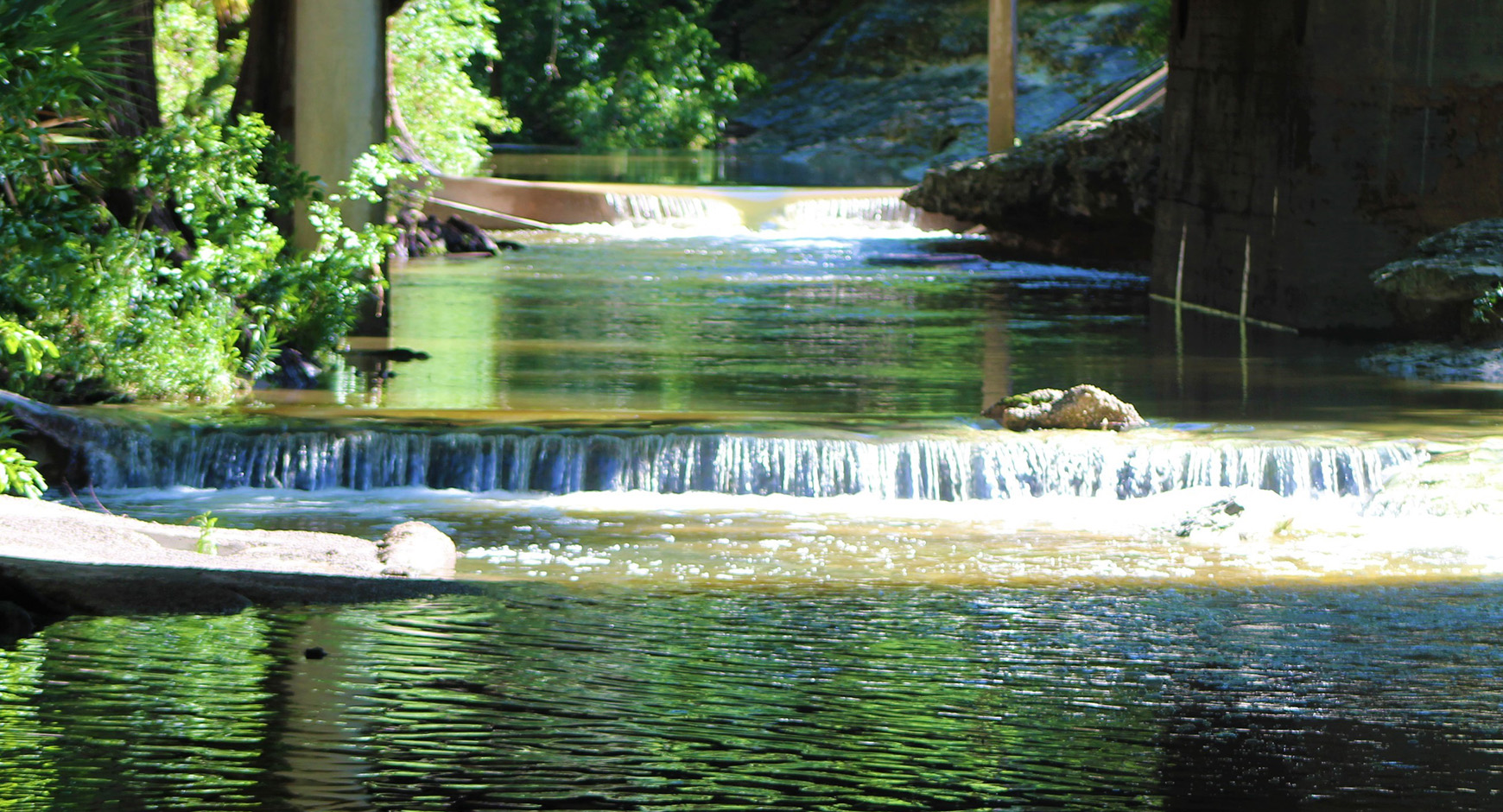The University of Texas at Austin is pleased to announce a framework plan for Waller Creek that will shape stewardship of the urban waterway that bisects campus. The plan is an addendum to the 2013 Campus Master Plan, and establishes guidelines for restoring and enhancing the landscape toward turning, Waller Creek into a companion to the “outdoor living room” created by the Speedway Mall redevelopment.
“The Waller Creek Framework Plan (WCFP) is a great step forward, and in some areas a first step for the university, in bringing together our disparate relationships with the creek into a coordinated approach to guide university investments going forward,” says Darrell Bazzell, senior vice president and chief financial officer at UT Austin. “It will guide how the university focuses on enhancing the public safety and circulation along and across the creek, the longevity of the creek banks, and the entire system of storm water functionality as well as the natural beauty of the creek.”
Waller Creek was originally the eastern frontier of the Forty Acres in 1883. Even when UT Austin expanded about 100 years ago to include the creek, it was largely ignored and minimally maintained. Much of the infrastructure around the creek has focused on moving people over the creek; one of the first bridges, the old stone Memorial Bridge at 23rd Street, was built in conjunction with the stadium in 1924. Just over three decades later, one of UT’s more contentious stories—the Battle of Waller Creek—played out on its eastern bank when trees were removed to expand what is now Darrell K. Royal Memorial Stadium.
While new buildings and other campus projects largely turned their back to the creek, many worked to enhance its potential. In 1936, faculty helped plant the bald cypress that currently function to stabilize the banks despite widely varied water levels. Research along the creek has informed campus and the city about pollutants, biodiversity and other projects.
Recent activity on campus signals a shift that embraces rather than walls off Waller Creek. For example, the most recent building constructed along the main campus portion of the creek—the new LEED-Silver Engineering Education and Research building—includes a door that opens directly to the west bank. The Dell Medical School District, a 16-acre complex finished in 2017, was designed to restore the native landscape and topography, a strategy that earned campus a SITES Gold award. This strategy continues on the rest of campus where Landscape Services has removed invasive species and planted beneficial plants and where Environmental Health and Safety is implementing a storm water management plan.
“Waller Creek is, in conjunction with San Jacinto Blvd, a corridor through campus that adds immense value to students, staff and faculty,” says Jim Walker, director of the Office of Sustainability. “I look forward to the next several years of capital projects and campus growth to see how we are able to enhance the ecosystem health of the creek as well as its central role to the campus experience.”
The full text of the WCFP can be found online.
Written by Kristin Phillips, Communications Coordinator in the Office of Sustainability

